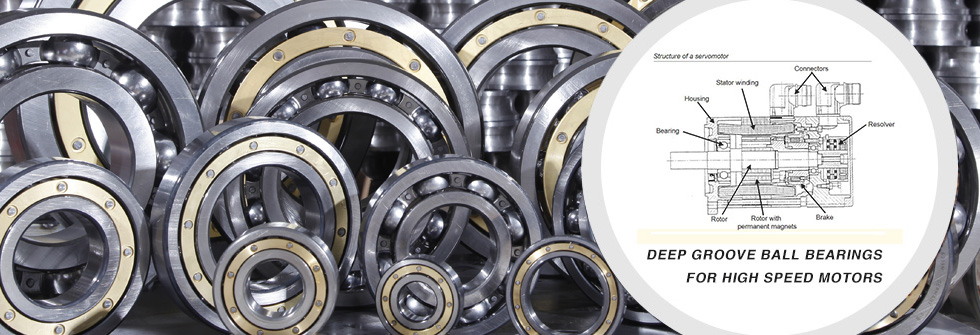Electrically Insulated Bearing
2015-08-26When using a standard DOL (direct on line starter), star delta starter or even n liquid starter standard bearings in the motor is not a problem. When using a Soft Starter or VFD, it is recommended that bearings are insulated. This is to prevent rotor / bearing racking which could result in a direct short. But in the event where a none insulated motor is available it could be used as a short term option. Unfortunately there is no way of determining the deterioration of said motor.
Generally you won't need it for DOL, Star Delta, liquid starters, reactor starters and the like as they use contactors but as soon as you introduce electronics you have a problem. The induced voltages on the rotor make
it see an electrical circuit through the rotor, down one bearing, along the frame and back via the other bearing.
The challenge comes when you have a magnetized shaft of bearing pillar block. You now have a rotating conductor in a magnetic field. This induces a voltage and you have the problem even with contactor starters. How does the magnetism get there? Mostly from people using magnetic posts on alignment equipment but also from people using vibration monitoring equipment with a magnetic base. On the latter, rather drill holes and add threads for the accelerometer. But this can happen from an electrical fault or even a lightning strike. Even a high speed rub can induce magnetism. Some installations even align their shafts with magnetic North.
The higher the speed the greater the risk. Most motor and alternator manufacturers are now doing this insulation as standard. Things to watch for on the insulated side. Temperature and vibration probes that are earthed. Shims for levelling the bearings (Pedestal type on large machines) that get bent over.
Insulating the one bearing rids you of circulating currents but not the voltage build up. This rises to several hundred volts or even thousands of volts. When the voltage is sufficiently high to break through the lubrication film on the bearing, it flashes over. This is sometimes seen as glazing and misunderstood as a lubrication problem. Next step is mini lightning strike marks and then holes and eventually complete failure. This can happen on any high speed rotating machine like compressors, motors, alternators, gearboxes etc.
The discharge is so fast you will not pick it up with a standard multimeter. Carbon and copper bushes and mixtures of these don't work as they glaze over. Gold bristle brushes work and new technology with carbon fiber in rings mounted on the end shield are now used.











